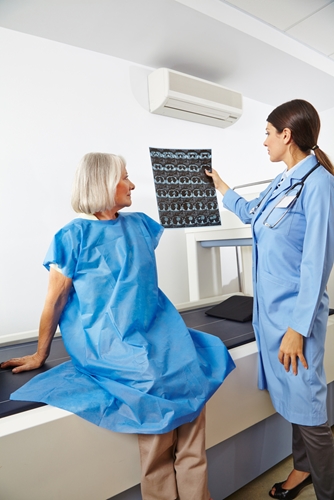The American health care system is experiencing significant overhauls as providers develop new methods for delivering optimal clinical services at lower costs. While a considerable challenge, the transition to patient-centered care will lead to improved outcomes for all stakeholders.
At the annual meeting of the Radiological Society of North America, innovation was the topic of conversation as attendees shared stories about reforming radiology.
What can drive radiology
According to AuntMinnie.com, technical innovation was the driving force behind RSNA 2014, held in Chicago, Illinois. Over the years, advancements in equipment became the focal points of the conference as previous radiologists revealed improvements in radiography and fluoroscopy that enabled radiation dose reductions for future exams.
Modalities have changed, as well, with radiology equipment becoming more advanced and capable of providing comprehensive images of the body, such as organs and blood vessels. For example, computed tomography has experienced almost exponential growth and solidified itself as a main tool in health. CT provides significant clinical accuracy that can eliminate the need for invasive procedures like biopsies.
"CT has progressed rapidly from head-only scanners to whole-body machines that are able to image entire sections of tissue at once and to use more than one energy beam to help predict the nature of the tissue imaged," said N. Reed Dunnick, M.D., president of the RSNA, quoted by AuntMinnie.com.
How research can help patients
It is clear that the last century has experienced some of the most critical medical improvements in human history, as clinical research helped drive patient-centered care into the forefront of radiology. Insights from physicians and valued researchers can lead to predictive medicine that focuses on health conditions at the molecular level and enhance outcomes for patients.
Health care providers making the extra effort to ensure that patients understand their respective diagnoses and prognoses can make the difference during treatments. Eventually, patients can contribute to clinical decision making and take pressure off doctors to make the right choice. The more interconnection there is between patients and radiologists, the better valued care they can provide.
Innovations revealed at the conference
This year marked the 100th meeting of the RSNA, making it one of the most important events to date. Chicago Inno reported that the 2014 event brought more innovative news and announcements than ever before, including:
- GE Healthcare announced a new one-and-done MRI system that allows for multiple contrasts to be used in a single scan
- Montage Healthcare Solutions, based out of Philadelphia, unveiled automated features that improve patient safety by integrating radiological data into digital records
- German manufacturer Ziehm Vision revealed the first 3D imaging model C-Arm for X-ray technology
- French radiology developer SuperSonic Imaging introduced a new device shaped like a hockey stick that allows for high quality scans of muscles, joints and ligaments for sports medicine.
The RSNA conventions continue to be the most important events in medicine, showing how far the industry has come in treating patients swiftly and accurately. It makes one wonder: What will next year have in store?
Contact Viztek for more information.
Ronny Bachrach
Latest posts by Ronny Bachrach (see all)
- Konica Minolta Debuts First-of-Its-Kind Digital U-Arm System at AHRA - July 27, 2016
- Researchers Detect Signs Of Stroke Risk Using MRI - June 27, 2016
- Imaging Biz: Q&A with David S. Channin MD: How to Make PACS Patient Centered - June 22, 2016










